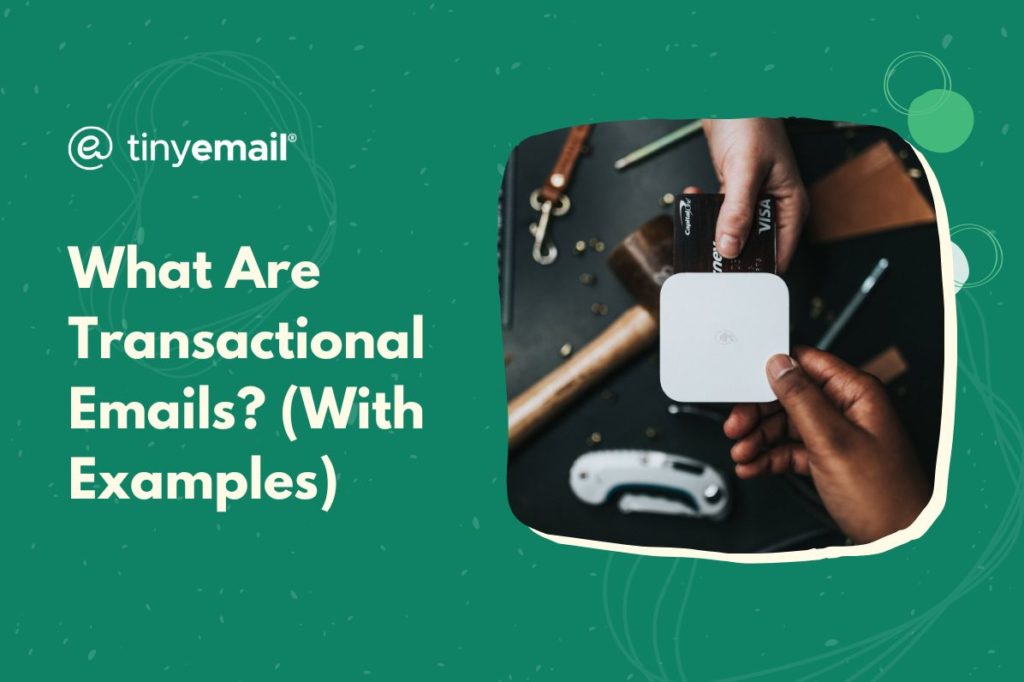Transactional emails are automated emails that are triggered by a user’s actions or behavior, such as signing up for a service, making a purchase, or resetting a password. These emails are typically used to provide information that is relevant to the user’s transaction or interaction with the company.
As a part of the customer “journey,” they can be a keen way of reaching out to, connecting with, and retaining a customer based on their actions, choices, and preferences. Let’s explore how to use these emails correctly.
What Are the Benefits of Transactional Emails?
There are a few benefits to sending out transactional emails, such as:
- Increased customer engagement
- Improved customer retention
- Higher open rates and click-through rates
- Improved brand reputation
- Opportunities for upselling
Transactional emails are always triggered by a customer action, which means that the recipient is already engaged with your business. So, what companies hope to achieve with these types of emails is to further engage with customers and promote additional resources and services or increase brand recognition.
As a bonus, they also show the customer that you are attentive to their needs and aware of their presence. That creates more alert marketing plans in the long-term, but helps the customer feel seen and helped in the short-term as well.
Transactional emails can even be used to provide a more personalized experience by showing the customer relevant content, which can improve the customer experience and increase the likelihood of repeat engagement.
Because of this, transactional emails typically have higher open rates and click-through rates than promotional emails. That’s because they are often more relevant to the customer’s interest, since they are triggered by an action. Transactional emails can be further used to promote additional products or services that are relevant to the customer’s recent purchase or activity.
This not only keeps your offerings front and center, but ensures the customer feels like they’re receiving a personalized experience.
What Are the Different Types of Transactional Emails?
Here are common examples of transactional emails. The right ones for your business are often a combination of many, or even a full collection.
The key is to be reactive to engagement, without pestering your customer. As such, it’s important to choose these email types wisely and employ them with the right pacing:
- Welcome emails: These are sent to new subscribers or users to welcome them to the company or service. They are typically sent after the customer has signed up for something or created an account.
- Order confirmation emails: These are sent to customers after they make a purchase to confirm their order details and provide an estimated delivery date.
- Shipping confirmation emails: These are sent to customers after their order has shipped to provide a tracking number and delivery status updates.
- Password reset emails: These are sent to users who have requested to reset their password. The email asks them to confirm their identity and also provides a link so they can reset their password.
Account activation emails: These are sent to users who have signed up for a service or created an account to confirm their email address and activate their account.
Examples of Transactional Emails
What do these emails look like in practice, and how can you know if they’re right to your business? Here are good examples of transactional emails based on leading companies:
Airbnb
After a user books a trip or a room, Airbnb sends a booking confirmation email that includes the details of the reservation, the host’s contact information, and instructions for check-in and check-out.
Amazon
After a user makes a purchase, Amazon sends an order confirmation email that includes the details of the order, the estimated delivery date, and a link to track the shipment.
Uber
After a user takes a ride, Uber sends a receipt email that includes the fare details, the driver’s name and photo, and a link to rate the driver.
Dropbox
After a user signs up for Dropbox, they receive a welcome email that includes instructions on how to get started, alongside links to download the mobile and desktop apps.
After a user creates a profile on LinkedIn, they receive an activation email that includes a link to confirm their email address and complete their profile.
When Creating a Transactional Email, Keep This in Mind...
You may notice that some of the transactional emails above follow a similar pattern. They all provide the customer with a convenient, easy way to view the details of their transaction, such as:
- How much they spent
- What they spent it on
- Details about who they interacted with
- How to complete more actions if they want more out of the experience
When creating your own transactional email, think about how you can use the email to make your customer’s lives more convenient.
- What information would they want to have instant access to, should they purchase something from your company or use your service?
- Is there anything they should do or know right after creating an account on your website that could enhance their experience with your brand?
Answering these questions will help you create a transactional email that adds value to the lives of your customers.


